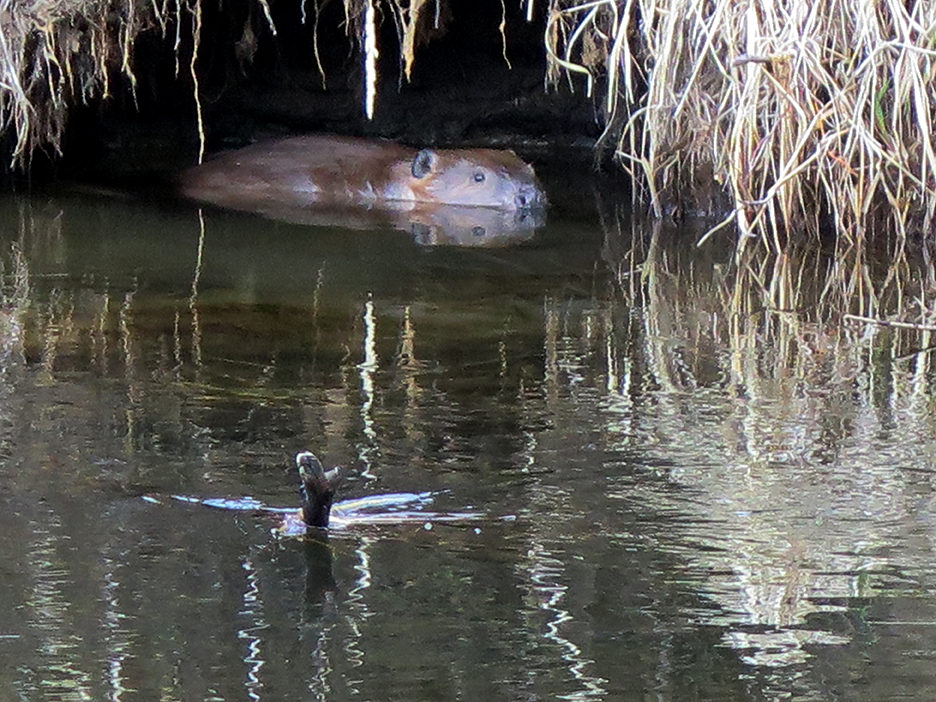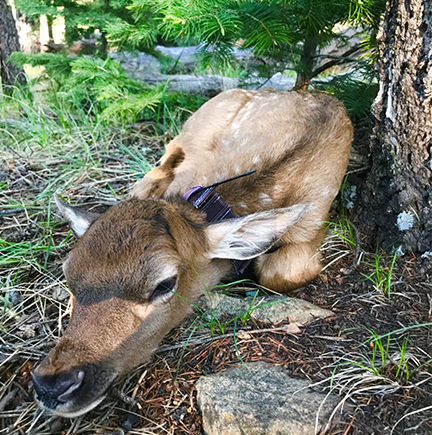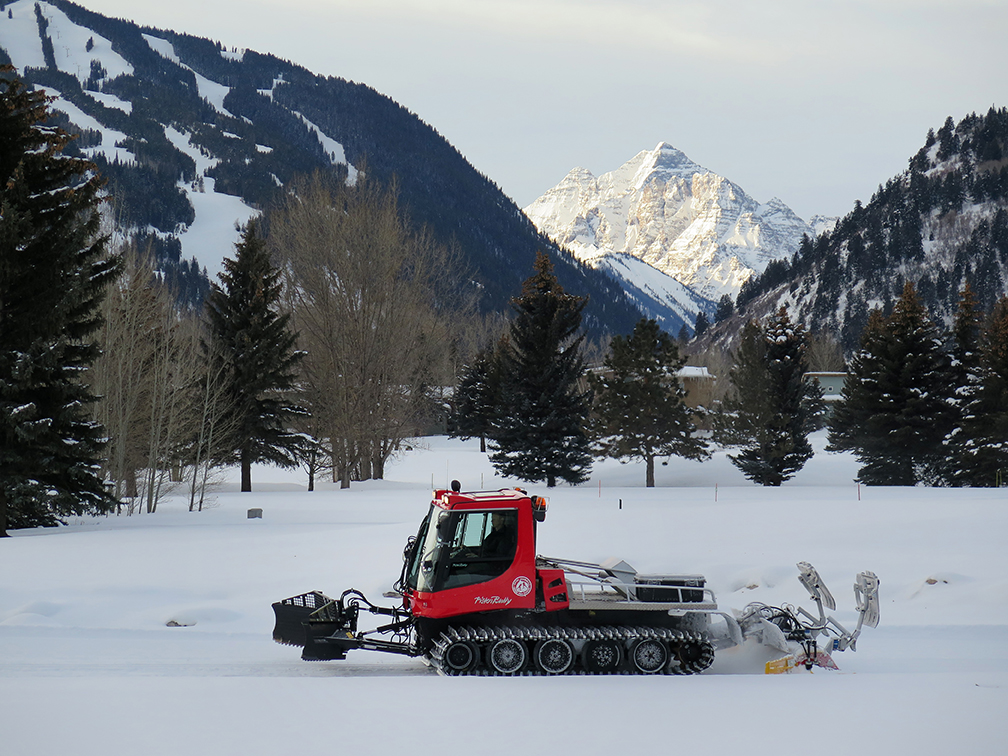Learn More
Nature’s engineers at work at North Star

A beaver peers from the bank at North Star Nature Preserve in the spring of 2018.
Management of the ecosystem at North Star Nature Preserve is not entirely in the hands of its human overseers. The beaver population at North Star has been steadily growing for the past decade or so – putting the riparian landscape under the capable stewardship of North America’s largest rodent.
In fact, the flat-tailed animals’ ability to alter a landscape may be second only to that of humans. While North Star is perfect for beavers, with its slow-moving water, wide valley and preferred forage (aspens, cottonwoods and willows), the beavers are also perfect for North Star. They improve the health of the riparian ecosystem by flooding upland areas and creating new side channels that help improve habitat for birds and ungulates such as elk and moose. In addition, beavers foraging on willows stimulate vigorous sprouting of the plants.
Technology key to wildlife studies

Bighorn sheep, mountain goat and elk herds in the Roaring Fork Watershed are all the focus of Colorado Parks and Wildlife (CPW) studies that employ GPS tracking collars to determine herd movements, animal interactions and, in the case of elk, calf mortality.
New in this effort is the involvement of Pitkin County Open Space and Trails (OST), which has budgeted roughly $92,000 in 2019 to help fund the tracking equipment; another $54,000 allocation is also contemplated in 2020.
Good grooming habits start early

Pyramid Peak looms beyond the Aspen Golf Course
Aspen-Snowmass Nordic crew hits the trails before first light
It’s still dark outside when Simon deftly eases the PistenBully grooming machine out of the garage bay door and onto the snow-covered Aspen Golf Course.
The landscape, so familiar during daylight hours, is disorienting at night to the uninitiated. Immediately, Simon adjusts the multi-function control stick in his right hand and begins rolling a new layer of corduroy over the multitude of diagonal gouges scratched into the snowpack by the prior day’s Nordic skiers. After checking his work in the rear window, he re-adjusts to ensure the grooming machine is erasing the scuffed-up surface, combing it into a smooth ribbon of rolled snow. We’re moving at speed 6 on a machine with speed settings of 1 (are we moving?) to 9 (slow).
